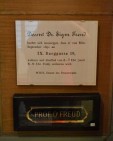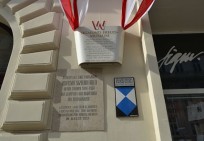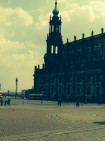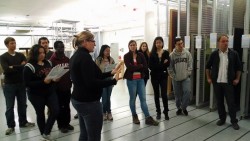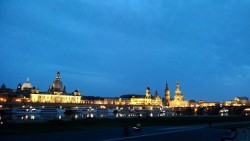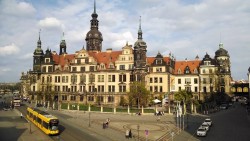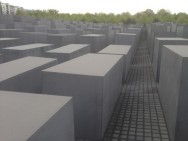Having been born and raised in the indulgent capitalist west, our understanding of communism and socialism was purely literary, a discussion of Marx’s ideals for communism, and to a certain extent, of whether they ever became implemented in reality. The consensus opinion was that communism had become distorted, twisted, and bastardized, and that it had never really come to fruition in its pure and intended form. But what of those bastard children of socialism and communism? What ever became of them? Was not almost half of Europe gussied up in red and taught the ways of communal living and working for the good of the state? And what were the lessons to be learned, particularly in the GDR? East Germany was Communist for almost forty years before it rejoined its capitalist forebears. It must have been hard for people to switch ideologies and ways of thinking from one day to the next.
In Wien, we worked on issues of das “Rote Wien” and the influence of the Soviet occupation and division of the city. I saw many divisive things and came face to face with the specter of communism, as a force that does not really value the individual in society and is ready to crush them in its pursuit of gaining power and control. Vienna almost fell prey to the dreary specter of Communism. It would have been a tragedy if the city of Strauss, and music, and theater, and the intellectual crossroads of central Europe would fallen prey to the leveling bleakness of Russian communism.
And in Dresden, I drew ever closer to the red beating heart of the Soviet Marxist beast. The tracks were still fresh, but I asked a man on the street there, who told me that its spirit hadn’t taken hold here since
1990. But nevertheless, walking through the main market square, we ran across a lovely bearded man who could be described literally as a flag waving communist. It would seem that he thought he was better off under the communists. Maybe they did more to provide social support for more people than in the west, but was the cost worth it?…
On our first night in Dresden, as we journeyed to a beer-garden, led by Matthew, our fearless, whimsical leader, we found ourselves in what could only be considered a post-punk, post-modern part of the city. Here live the tattered souls, disenchanted with the world in the wake of the fall of the DDR.
In Berlin we saw what the division of a city and the wall that divided east from west did to the people who live there. The separation of families and communities created psychoses among the people who lived there. They were caged like canaries, driven crazy by the hopelessness of their situation. Many people died trying to get free, trying to get over or under the wall however they could. If the communist system was so good, then why did it have to wall people in? Certainly, some people wanted to be directed and taken care of in the socialist system of the DDR, but I strongly believe that most wanted to be free—and many died trying to reach the western side of the wall.



